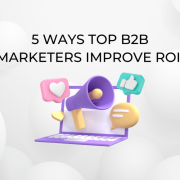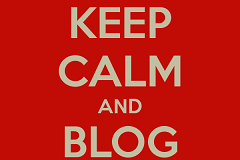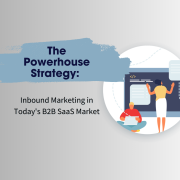3 Ways to Connect to Your Customers’ Buying Journey
Do you know where your online readers are in your typical customers’ buying journey?
Inbound or content marketing on a business blog or website works to attract potential customers but it depends on how well you connect to customers at the right time with the right words that inspire action.
Just as it’s important to make sure your blog or website content appropriately appeals to the type of customer you’re trying to attract, it’s also important to connect it to where those potential customers are in the buying journey.
- Some people who read your blog might not even be thinking about purchasing services like yours.
- Others may just be starting to explore options.
- Others may be looking to buy your product or hire a professional services firm like yours right now.
Knowing that your readers are at different places in this journey, it’s your job to ensure your content appropriately matches the map.
The Customers’ Buying Journey:
Divide and Conquer
In the world of Inbound marketing, understanding the customer buying journey is paramount. It’s not just about offering various services; it’s about tailoring your content to meet your potential customers where they are in their decision-making process. Your content should guide them seamlessly through each phase, ensuring that their needs are met as they progress. This approach is especially crucial for B2B companies where multiple stakeholders may be involved at different stages. In this article, we’ll explore a simplified perspective on where your prospects may be in their buying process and how to create content that resonates with each stage.
1. For the Explorer:
Explorers are at the initial stage of researching solutions to their problems. They may know very little about what your industry does, so it’s essential to start with the basics. Create content that revolves around 101 concepts, definitions, and frequently asked questions. Remember, don’t assume they understand what comes naturally to you, but also, don’t oversimplify to the point of insulting their intelligence. The goal here is to provide rudimentary information and ease them into the journey.
2. For the Searchers:
As potential customers transition from the Explorer stage to Searchers, they are actively seeking solutions like yours. They require more in-depth information. This is the stage where you can write about what to look for in services like yours, compare different options, and even offer some do-it-yourself advice. DIY posts can be powerful because they often lead the prospect to realize they need professional help. At this point, they’ve completed their basic research and are ready for more advanced content. Be cautious about discussing pricing as price sensitivity may be a factor. Focus on selling the value of your services and avoid diving into pricing details until you’ve convinced them of the benefits.
3. For the Buyers:
Buyers are at the final stage and are ready to make a decision. They’ve done their digging and have a good idea of what they need. Your content for this group should emphasize the benefits of your services, cost-effectiveness, and how your solutions can help their businesses grow. Case studies of brands you’ve worked with can be particularly convincing in demonstrating the value of what you do. This content should be focused on selling without directly pushing your product. If you do mention pricing, consider presenting a price range or stating “prices starting at” to avoid pigeonholing yourself for a price quote.
Throughout these stages, be sure to include a clear call to action in your content. Encourage readers to contact you for a free consultation and provide links to your website’s relevant service pages. Don’t leave them hanging; make it evident what the next step is to initiate a working relationship with your company.
Remember that content marketing doesn’t require a hard sales pitch. By consistently offering valuable blog posts and resources tailored to each stage of the customer buying journey, you’ll build trust with your audience. When they reach the buying stage, they will be more inclined to reach out to you.
In conclusion, content marketing is a powerful tool for lead generation and client acquisition when it provides problem-solving information, addresses the specific needs of your readers, and sparks their desire to learn more about how your business can assist them. By understanding the customer buying journey and creating content that aligns with each phase, you’ll be on the path to success in the competitive world of SEO marketing.





